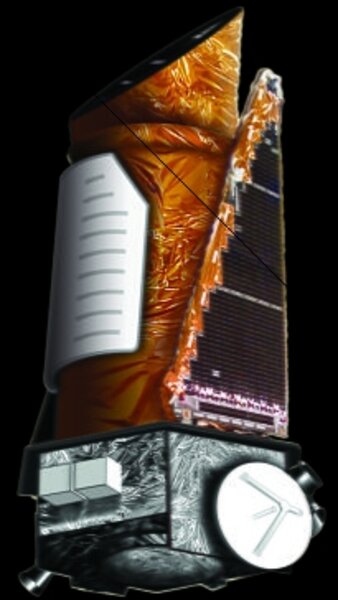Hunting for other Earths: Is that a planet or a sunspot?
Loading...
After a textbook launch Friday night, NASA's hardy planet hunter Kepler is on its way out of the Earth-moon system. You can read more about it here and here.
Kepler is using an interesting technique to spot the planets it's trying to find. It's looking for the faint dimming a star's light will undergo as a planet passes in front of it, as seen along Kepler's line of sight.
It's called the transit technique. It's a testament to ever-more sensitive detectors and the ability to put telescopes in space that scientists can use this approach to hunt for planets around stars as far away as 3,000 light years.
But, asks Stuart Hurst in a comment to a post-launch Kepler post, how will Kepler's handlers tell the difference between dimming because a planet has briefly signaled its presence, or because the star has its own version of sunspots?
Enter Todd Klaus, with Kepler's Operations Center at the National Aeronautics and Space Administration's Ames Research Center at Moffett Field in California.
In an e-mail exchange, he explains that researchers have a couple of strong clues that what they detect is indeed a planet candidate, and not a "starspot."
"First, the transit duration for planets is much smaller than for spots," he writes. "The transit duration for planets is on the order of hours, whereas the transit duration for spots is on the order of days."
Second, he continues, planets have consistent orbital periods, so they reappear at regular intervals. Starspots do not.
"This is one of the reasons that we want to see at least three transits, equally spaced, before we will say we have a planetary candidate," he adds.
And other astronomers will be using ground-based and space-based telescopes for follow-up work on Kepler's detections. Their different approaches to picking up signs of extrasolar planets will serve as yet another check.
By the way, if you're eager to snag the latest Kepler updates, check out its Twitter posts. A spacecraft twittering? Supposedly it's not good practice to anthropomorphize a telescope, but, hey, what the tweet....


